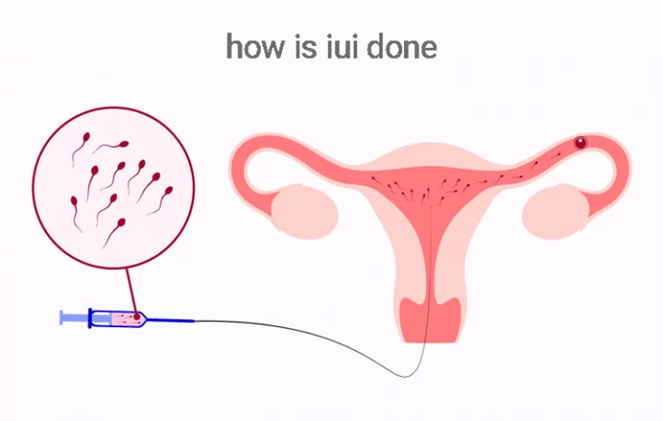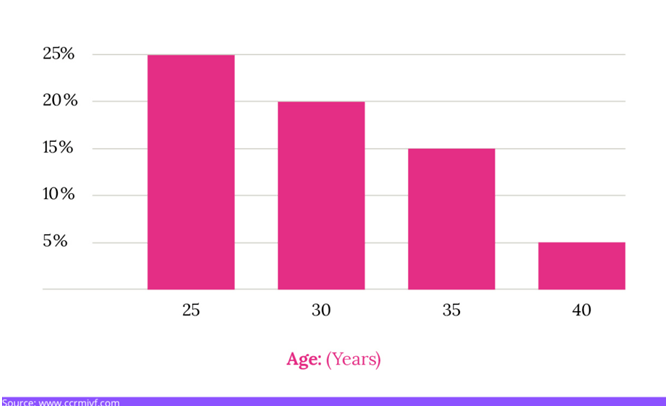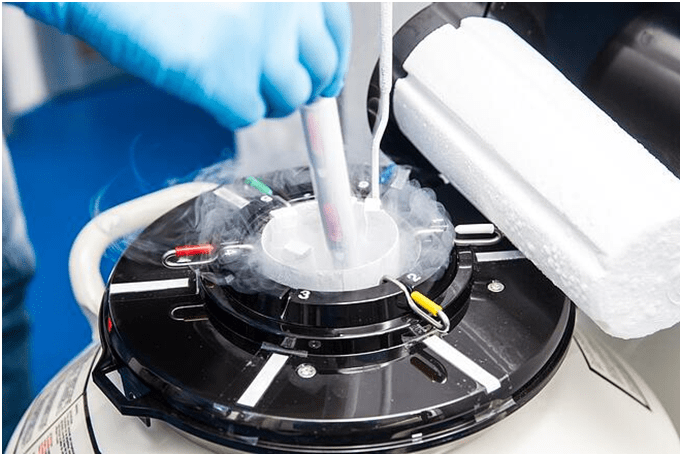The endometrial lining, a critical player in the complex symphony of reproduction, forms the foundation for successful embryo implantation and pregnancy. When this lining thins, the likelihood of successful implantation and pregnancy decreases. However, medical advancements, especially in India with renowned IVF centres and expert fertility specialists, are forging ahead with innovative fertility treatments.
One such breakthrough is stem cell treatment for female infertility due to thin endometrium. It is a ray of hope that holds the potential to redefine the landscape of fertility and reshape the narratives of those facing thin endometrial lining challenges. For individuals facing difficulties due to a thin endometrium, consulting one of the best infertility doctors in India becomes crucial.
Dr Hrishikesh Pai, a luminary in the field of reproductive medicine and one of the best IVF doctors in India, stands as a beacon of hope for those navigating the complexities of thin endometrium. At Bloom IVF Centre in India, Dr. Pai offers personalized guidance and state-of-the-art treatments to address this concern. He aims to provide the best stem cell treatment in India to improve the chances of successful conception.

Overview: Understanding Thin Endometrium and its Impact on Fertility
A thin endometrium refers to a uterine lining that is thinner than optimal for successful embryo implantation and pregnancy. The endometrium plays a crucial role in supporting and nourishing the embryo during its early stages of development. When the endometrial lining is insufficiently thick, it can profoundly impact a woman’s fertility and ability to conceive.
Challenges Faced by Individuals with Thin Endometrium
Women with a thin endometrium often encounter many challenges when trying to achieve successful pregnancies:
- Implantation Difficulties: A thin endometrial lining poses hurdles for successful embryo implantation, diminishing the chances of a pregnancy taking root.
- Increased Risk of Miscarriage: The reduced thickness of the endometrium increases the risk of miscarriages in the early stages of pregnancy.
- Inadequate Nutrient Support: The thinner lining might struggle to provide the necessary nutrients and support for proper embryo development.
- Limited Implantation Window: A thin endometrium can result in a shorter window of time during which implantation is viable, further restricting successful conception.
- Lower Hormonal Response: The hormonal changes needed for proper implantation might be compromised due to inadequate endometrial thickness.
- Challenges in Assisted Reproductive Techniques: For individuals undergoing assisted reproductive techniques like IVF, a thin endometrium can hinder the success of embryo transfer and subsequent implantation.
- Stress and Emotional Strain: The challenges of thin endometrium can lead to emotional stress and anxiety, impacting the overall well-being of individuals on their fertility journey.
Understanding: What is Stem Cell Treatment?

Stem cell treatment is a cutting-edge approach that harnesses the inherent regenerative capabilities of stem cells to address a wide range of medical challenges. From cardiac repair to neurological disorders, stem cell therapy is carving new avenues of hope. And now, it is making waves in the realm of reproductive health, offering a potential solution to the challenges faced by those with thin endometrium.
The foundation of stem cell therapy lies in the belief that the body possesses its own reservoir of healing potential, waiting to be harnessed. By isolating and cultivating these potent cells, medical experts can introduce them into targeted areas of the body, where they work their magic by fostering tissue growth, repair, and renewal.
Understanding Stem Cells and Their Regenerative Power

Stem cells are the body’s master cells, possessing the remarkable ability to develop into different cell types with specialized functions. They occur in two main types: embryonic stem cells, found in embryos during early development, and adult stem cells, present in various tissues throughout life. Stem cells play a vital role in tissue renewal, repair, and regeneration, making them a cornerstone of the body’s healing process.
“In the context of thin endometrium treatment, stem cells can be harnessed to promote the growth and development of a thicker, healthier uterine lining, enhancing the chances of successful implantation and pregnancy,” explains Dr. Hrishikesh Pai, the esteemed medical director of Bloom IVF Centre in Mumbai, India.
Recent Advancements in Stem Cell Research and Reproductive Health
Endometrial Regeneration:

Research has focused on using stem cells to regenerate and enhance the endometrial lining. This offers potential solutions for thin endometrium cases and improves the chances of successful embryo implantation.
Ovarian Tissue Restoration:

Scientists have explored using stem cells to restore damaged ovarian tissue to rejuvenate ovarian function and enhance fertility potential.
Egg and Sperm Development:

Stem cells have shown promising results in developing into functional egg and sperm cells. This offers potential alternatives for individuals with fertility challenges.
Uterine Tissue Engineering:
Researchers are working on creating artificial uterine tissue using stem cells, paving the way for advancements in uterine transplantation and addressing infertility due to uterine factors.
Fallopian Tube Repair:

Stem cells are being investigated for their role in repairing damaged fallopian tubes, which are essential for natural conception.
Male Infertility Solutions:

Stem cell research aims to address male infertility by developing functional sperm cells from stem cells or improving sperm quality through regenerative interventions.
Reduced Risk of Rejection:
Experts utilize techniques like induced pluripotent stem cells (iPSCs) to generate patient-specific stem cells. It can reduce the risk of immune rejection during treatments.
Enhanced In Vitro Fertilization (IVF) Techniques:
Reproductive medicine specialists integrate stem cells into IVF protocols to improve embryo development, implantation success, and overall IVF outcomes.
These advancements underscore the ever-growing potential of stem cell research in revolutionizing reproductive medicine. This offers new avenues of hope for individuals facing fertility challenges and reshaping the landscape of assisted reproductive technologies.
Now, let’s understand,
Steps Involved in Stem Cell Treatment for Thin Endometrium
The stem cell treatment for thin endometrium aims to rejuvenate the uterine lining, enhancing the chances of successful embryo implantation and, ultimately, a healthy pregnancy. This innovative thin uterine lining treatment involves several key steps:
1. Consultation and Evaluation: The journey begins with a comprehensive consultation with a skilled fertility specialist. They assess the individual’s medical history, fertility challenges, and suitability for stem cell treatment.
2. Stem Cell Harvesting: The fertility expert harvests the stem cells from the patient’s body through minimally invasive endometrium surgery. Doctors often perform procedures like bone marrow aspiration or adipose tissue extraction.
3. Processing and Isolation: The collected stem cells undergo processing to isolate and concentrate the desired cell population. This purification ensures the potency and effectiveness of the cells for targeted regeneration.
4. Uterine Lining Preparation: Before stem cell administration, the uterine lining is prepared to create an optimal environment for cell integration and growth. This may involve hormonal therapies or other techniques to enhance receptivity.
5. Stem Cell Administration: The fertility doctor introduces the isolated stem cells into the uterine lining through a minimally invasive procedure. This strategic placement maximizes their impact on the endometrial tissue, encouraging regeneration.
6. Monitoring and Follow-Up: Post-treatment, regular monitoring and follow-up appointments with the fertility specialist are crucial to track the progress of the treatment. Adjustments can be made based on the individual’s response.
7. Endometrial Rejuvenation: Over time, the introduced stem cells work to stimulate the growth of a thicker and healthier endometrial lining. This rejuvenation enhances the environment for embryo implantation.
8. Embryo Transfer: In cases where assisted reproductive techniques like IVF are used, the embryo transfer is carefully timed to align with the rejuvenated endometrial lining’s optimal condition for implantation.
9. Pregnancy Monitoring: If successful, the fertility expert closely monitors the pregnancy to ensure its progression and well-being, reflecting the completion of the stem cell thin endometrial lining treatment’s positive impact.
Let’s look at the,
Benefits of Stem Cell Treatment for Thin Endometrium
- Enhanced Endometrial Thickness: Stem cell treatment stimulates the growth of a thicker and more receptive endometrial lining. It helps improve the chances of successful embryo implantation.
- Improved Implantation Rates: The regenerated endometrial tissue enhances the environment for embryo attachment. This increases the likelihood of successful implantation.
- Reduced Miscarriage Risk: A healthier endometrial lining lowers the risk of early miscarriages by providing optimal support to the developing embryo.
- Natural Healing Mechanism: Stem cell treatment harnesses the body’s innate regenerative power. It offers a natural and holistic approach to addressing thin endometrium challenges.
- Personalized Approach: The treatment can be tailored to individual needs, ensuring a customized and targeted solution for each patient.
- Minimally Invasive: Fertility experts typically perform stem cell treatment using minimally invasive techniques, resulting in shorter recovery times and reduced discomfort.
- Integration with Assisted Reproductive Techniques: Stem cell treatment can complement other assisted reproductive techniques like IVF, enhancing the overall success rate of the procedures.
- Long-Term Impact: The positive effects of stem cell treatment can extend beyond a single cycle, offering lasting benefits for future pregnancy attempts.
- Patient’s Own Cells: Stem cells are often sourced from the patient’s body, minimizing the risk of rejection or adverse reactions.
- Advancement in Reproductive Medicine: Stem cell treatment represents a cutting-edge advancement in reproductive medicine, offering renewed hope to those facing fertility challenges due to thin endometrium.
Importance of a Healthy Endometrial Lining for Successful Implantation
A healthy endometrial lining is a cornerstone for successful implantation and pregnancy. Serving as the nurturing bed for the embryo, this lining provides a vital connection between the developing embryo and the uterine wall. A thicker and well-developed endometrial lining offers a welcoming environment rich in nutrients and blood supply, essential for the embryo’s growth and attachment.
A robust endometrial lining optimizes the chances of secure implantation, enabling the embryo to establish a strong connection with the maternal body and set the stage for a successful pregnancy journey. Its significance underscores the critical interplay between maternal health, reproductive success, and the potential for realising the ultimate dream of parenthood.
Conclusion
By harnessing the regenerative power of stem cells, individuals struggling with thin endometrium can potentially achieve their dream of a successful pregnancy. Consulting a reputed IVF doctor in Mumbai, India, like Dr Hrishikesh Pai, who is well-versed in stem cell therapies, can offer renewed hope and opportunities for those on their fertility journey.
FAQs:
1. Is stem cell treatment safe for thin endometrium?
Stem cell treatment is generally considered safe when administered by experienced medical professionals. However, individual considerations and assessments are crucial to ensure suitability and minimize risks.
2. Is stem cell treatment a substitute for other fertility treatments?
Stem cell treatment can be a complementary option or an alternative for those who have not responded well to conventional treatments. Consulting a fertility specialist can help determine the most suitable approach.
3. What is the success rate of stem cell treatment for thin endometrium?
Success rates vary based on individual factors, the condition’s severity, and the medical team’s expertise. Consulting with a fertility specialist can provide more personalized insights.
4. Are there any side effects associated with stem cell treatment?
While stem cell treatments are generally well-tolerated, potential side effects and risks should be discussed with a medical professional. Common side effects include localized discomfort or minimal bleeding at the treatment site.
5. Are there alternatives to stem cell treatment for thin endometrium?
Other treatments include hormonal therapies, uterine lining enhancement techniques, and in vitro fertilization (IVF). Stem cell therapy is a promising addition to the options available.
